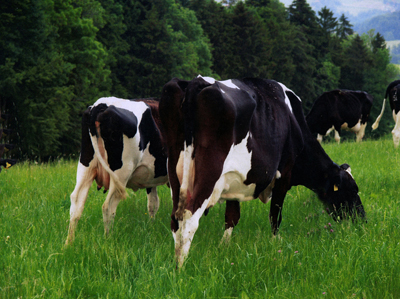Influence of the direction of use and live mass of dairy cows on the nutrient efficiency, environmental impact and economic viability of milk production
The aim of this project is to collect comprehensive and holistic data on milk production under Austrian production conditions for the following aspects:
1. Technical production data on the total nutrient input in milk production:
By determining the individual feed intake throughout the entire production process (from the calf to the cow's departure) as well as the milk production, the nutrient expenditure of milk production can be determined depending on the genotype (combined or milk-focused dual-purpose type, significance of useful life and basic feed intake capacity; taking into account the LM) and feed level (Concentrate feed content) can be calculated. From the results, the costs and efficiency of milk production can be calculated at many reference levels, namely per kg milk, per kg LM, per nutrient unit of feed, per day of life and per unit area.
2. Influence of feeding and genotype on milk quality:
Basic feed base and amount of concentrated feed as well as the genotype influence the fatty acid pattern in animal products. Basic feed rations increase the nutritionally valuable unsaturated fatty acids in milk and meat (CLA and Omega-3). These two fatty acid groups have a positive effect on human health in the following areas:
(1) cardiovascular diseases (lower blood lipids), (2) skin diseases (e.g. neurodermatitis), (3) rheumatism, (4) anti-inflammatory, (5) anticarcinogenic, (6) antidiabetogenic, (7) anabolic, (8) antithrombotic, (9) antiarteriosclerotic effects.
3. Basics for economic calculations of milk production:
The experimental plan (different genotypes and feed levels) results in a wide range of effort/return ratios, which also allow basic evaluations from an economic perspective. This enables basic economic statements to be made about milk production under very different production conditions by using model calculations with different price/cost ratios.
4. Basics for ecological impacts of milk production:
These very different effort/return ratios also lead to significantly varying ecological conditions. respect. Under typical Austrian production conditions, the amount of concentrated feed in particular represents an import of nutrients into the company and influences the environmental impact of the production processes. In addition, the genetic differences of the laboratory animals also mean different efficiency of nutrient utilization, which has an impact on the environment. Here too, model calculations are used based on fully recorded production data from the test.







